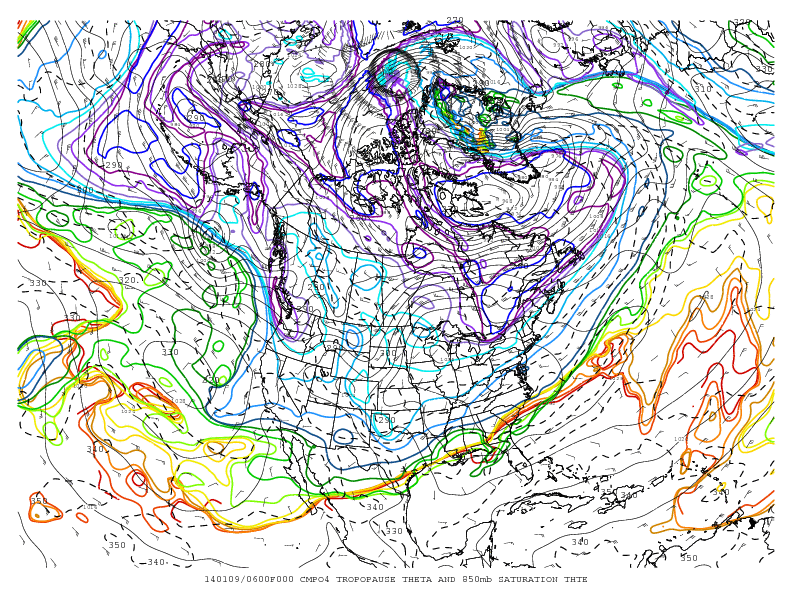Weather: What is a polar vortex?
Weather: What is a polar vortex?
PAOC grad student Vince Agard explains what exactly a Polar Vortex is in this week's The Tech.
The weather has been a major news story this week across much of the United States, as extraordinarily cold weather has swept the central and eastern parts of the country. Temperatures well below 0°F combined with blustery winds to create dangerous conditions, forcing the closings of schools and businesses as people were advised to stay indoors. Many recent news reports have attributed the extreme cold to a “polar vortex”— but what exactly does that mean?
The polar vortex is not actually a unique weather event. Instead, it is a persistent feature of the upper atmosphere in the winter hemisphere. The vortex arises because polar air is cold, and therefore less dense than the air at mid-latitudes. This creates what can be thought of as a planetary-scale low pressure system that is permanently centered over the pole. At the boundary between cold polar air and warmer air from lower latitudes is the jet stream, in which air flows in a cyclonic sense around the pole, thus forming the “vortex.” Occasionally, the jet stream is deflected further south than usual, extending the reach of the polar vortex. An extreme case of this extension was responsible for the recent cold event in North America.
Pictured: The colored lines show potential temperature at the tropopause, while the dashed black lines show the saturation potential temperature near the surface. The solid black lines are surface pressure. (Courtesy of PAOC Synoptic Lab Tropopause Maps: http://wind.mit.edu/~reanal/pv.html)

Related
Weather and Forecasting at MIT
IAP January 2014 An Introduction to Weather Forecasting